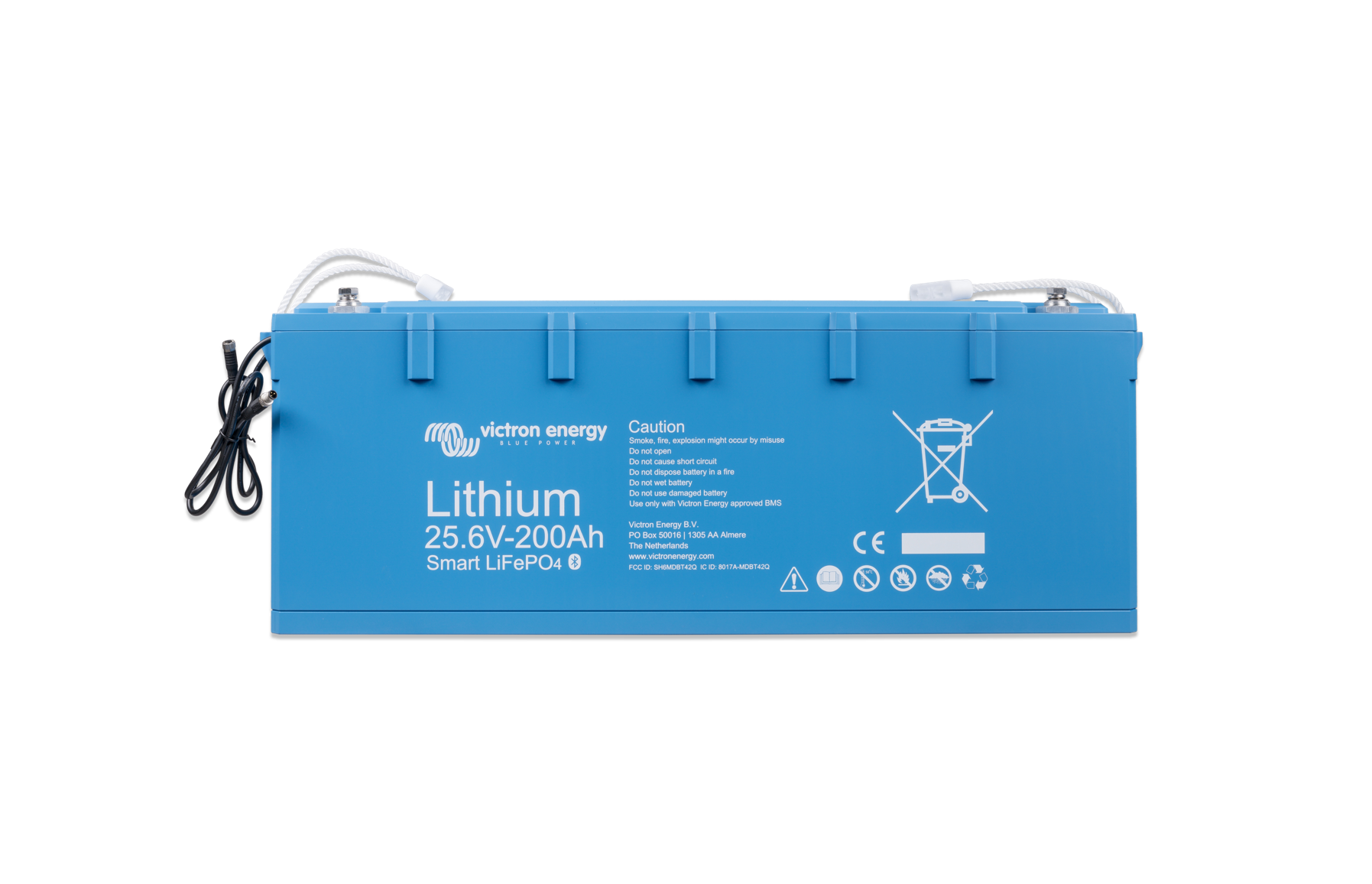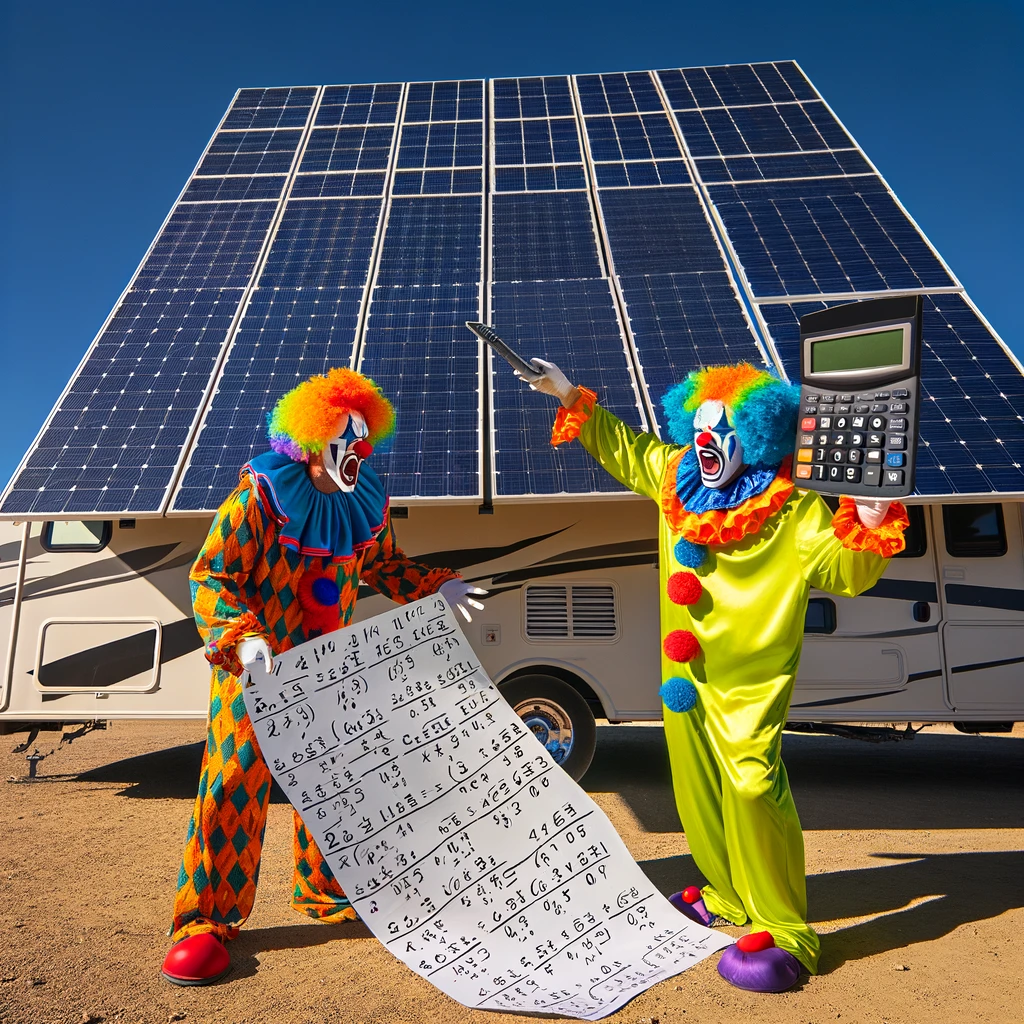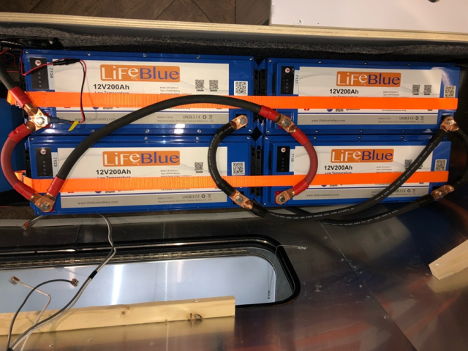
Choose Wisely
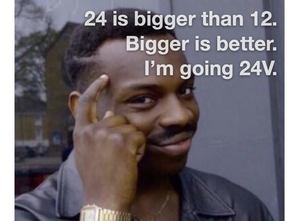
At AM Solar, we get a lot of customers coming to us requesting solar system designs and suggesting a particular voltage. We’ll help you build whatever you want, but we also want to make sure you have good information when making your decisions. Hopefully, this blog helps you choose wisely.
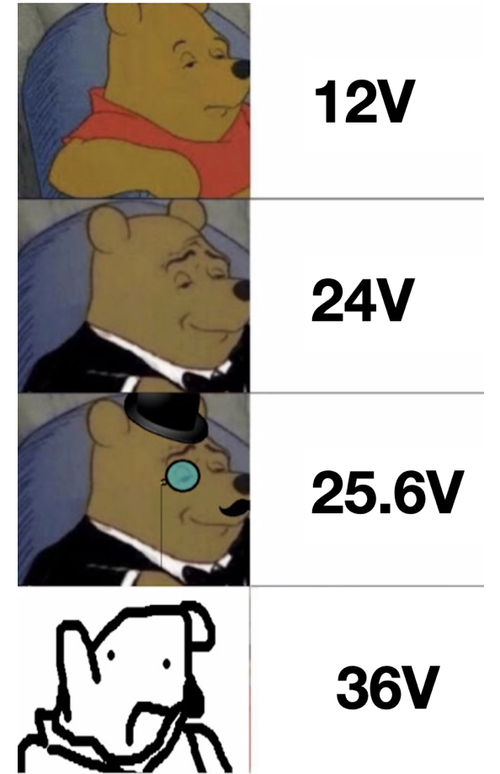
Nominal Voltage
First, let’s make sure we’re all speaking the same language. When someone talks about a 12V system, they are usually referring to the nominal voltage of the battery bank being 12V. This is created by having six 2V lead-acid cells connected in series, within one battery, and multiple batteries being connected in parallel to make a battery bank. This nominal voltage figure has more to do with chemistry (the details of which aren’t really relevant to this blog) than something you would actually see on your voltmeter since 12V lead-acid battery banks can range from about 10V to 14V depending on the state of charge.
With a lithium battery, you have four series-connected 3.2V lithium cells to make a 12.8V nominal battery. To keep things simple, these are commonly referred to as just “12V batteries”.
When more batteries, or cells, are connected in series you get higher voltage battery banks, like 24V, (25.6V lithium) and 48V (51.2V lithium).
The Decisions Making Process
When trying to decide what system voltage is best, we recommend starting low, at 12V, until you find reasons why 12V would be impractical. Then, look at 24V. Then, only if you have a very odd system, look at 48V. Having a system with an inappropriate voltage will result in unnecessary cost/complexity, and potentially reduce options for future expansion.
12V Pros and Cons
If don’t need more than 3000VA of inverter output, go with a 12V system.
+Simplicity: If you need to get help with your system you are going to find more people understand 12V systems than any other voltage. Most RVs are designed from the factory to work with 12V house battery banks.
+Commonality: 12V systems are far more common than any other voltage which means that replacement parts will be easier to find, on shorter notice, at better prices.
+Alternator Charging: Most alternators and chassis batteries are 12V. If you hope to enjoy high current charging through a battery combiner, like a Victron Cyrix, your house battery bank needs to be at the same voltage as your chassis battery bank, which means having a 12V house battery bank will be ideal.
+DC Distribution: Most DC loads run on 12V. This includes lights, fans, refrigerators, leveling jacks, etc. If you have a 12V battery bank, you can just power these loads directly. If you have a 24V or 48V battery bank, you need to step that voltage down to 12V. This adds cost and complexity to your system, especially if you need to send power to leveling jacks. In some 24V systems, we have had to use three parallel-connected Victron Orion 24/12’s to supply enough current for the leveling jacks.
+Battery Expansion: If you have a lithium battery system, you can add to your battery bank at any time. If you have a 12V lithium battery bank, you can add to your system with one battery at a time. With a higher voltage system, you need to add batteries in increments of two or four at a time, unless you are adding more rare 24V or 48V batteries.
+Solar Expansion: The solar array needs to have a Vmp that is about 50% higher than the nominal voltage of the battery bank in order for charging current to flow. To get a higher voltage solar array, you need to have more series-connected cells or panels. But, series connections are susceptible to partial shade. One blocked cell shuts down all the cells connected in series to it. So, in order to charge a higher voltage battery bank, you need more series connections, which makes your solar array less resilient to the effects of partial shade.
+Heated batteries: Some heated lithium batteries, like LiFeBlue, only work in parallel configuration (12V systems). If you plan on using your batteries in a cold climate, heated batteries are a necessity, which means that 24V and 48V systems aren’t an option.
-Thicker cables: Assuming the same power, a lower voltage means a higher current, and higher current means thicker cables. If you have eight 200W panels on your roof, you need 2ga cable from the roof to the battery bank for a 12V system. For a 24V system, you can get away with slightly less expensive 4ga cable.
-Inverter Limitation: Along the lines of thicker cables, the largest inverter you would want to power with a 12V system will be 3000VA. You can do this with a set of 4/0 conductors and a standard 500A shunt. If you need 5000VA of inverter capacity, and only want to pay for a single inverter on a 12V system, you would need to run two sets of 4/0 and get a special high current shunt. This is far from elegant.
24V Pros and Cons
If you have a trailer or 5th Wheel, or plan on using a secondary alternator, where stock alternator charging isn’t as critical, a 24V system can be very economical when you need more than 3000VA and have a large solar array.
+Higher Wattage: With the higher battery voltage compared to a 12V system, there is less current, which allows for more wattage on 4/0 cable. 24V systems are ideal when someone needs to run two air conditioners at the same time on a 5000VA inverter.
+Larger Solar Array: The Victron SmartSolar MPPT 150/100 charge controller can support about 1600W on a 12V battery bank, but a 24V battery bank lets you double that. If you don’t want to pay for two solar charge controllers, but still want a large solar array, a 24V battery bank may be ideal.
+Increased Efficiency: When running heavy loads like DC air conditioners, there will be a slight efficiency increase on a 24V system compared to a 12V system.
+Increased Maximum Battery Bank Size: Some batteries have a limit on how many parallel connections are allowed to maintain a balanced charge between batteries. LiFeBlue lithium recommends no more than four parallel connections. With a 24V battery bank, you can have eight batteries, since you would be using four parallel groups of two in a series connection.
-DC Distribution: A 24V to 12V converter will need to be used to power DC loads.
-Battery Expansion: In most cases, adding to a lithium battery bank will require adding two batteries at a time.
48V Pros and Cons
If you don’t have an alternator or DC loads, 48V systems can be a great way to have high AC output and a large solar array. This makes 48V very popular with off-grid cabins. Additionally, the advent of new alternator chargers, 48V may end up being the standard for RVs in the future, but we aren’t there yet.
+High Output: Because of the higher voltage and lower current, 48V systems can have higher output inverters, like 8000VA and larger.
+Largest Battery Capacity: Because of the reduced number of parallel battery connections, 48V systems can have largest battery banks.
-RV Compatibility: RVs require elaborate alternator charging and DC distribution systems when using 48V house batteries.
-Technical Know-how: Few technicians know how to work with 48V, which is why most mobile 48V systems are owned be Electrical Engineers who like to tinker.
Still not sure
If you still aren’t sure what voltage would be best for your solar power system application, ask us, and we’ll help you figure it out.
